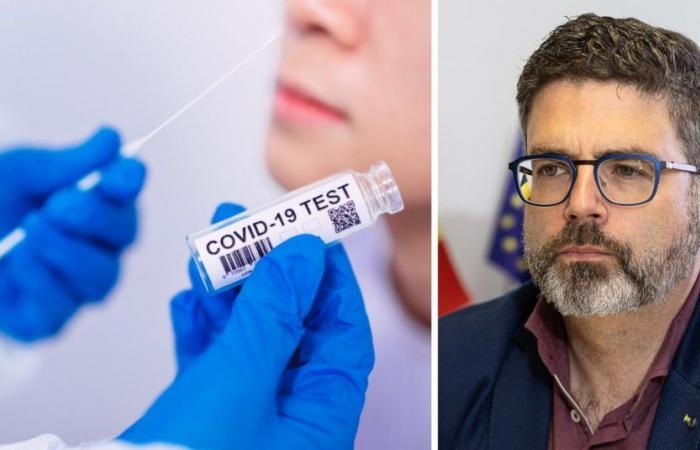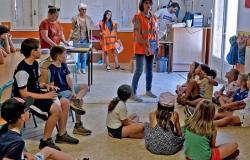Covid contaminations had not been this high since last winter. The cause is the appearance of a new variant, more transmissible and which seems to better bypass the vaccine. Should we be worried though?
We had almost forgotten it. But, no, Covid never really disappeared. It even resurfaced quite markedly during the month of June. The KP2 variant, “child” of JN1 which dominated in winter, would avoid antibodies and attach better to the cells it wants to infect. Why should we fear a strong comeback of the virus? The point in five questions with virologist Steven Van Gucht (Sciensano).
“Even if we talk about it less, we have always experienced continuity in the circulation of the virus,” recalls Steven Van Gucht. The last significant peak was from November-December. Afterwards, the figures were at their lowest level since the start of the pandemic.”
In recent weeks, the virologist has noted a clear increase in contamination. The latter must be put into perspective: the jump is significantly less than those we have experienced in the past.
Covid is still not a typically seasonal virus.
Steven Van Gucht
Virologist (Science)
“The phenomenon is however notable, in the sense that the majority of respiratory viruses tend to circulate less during the summer period. This means that Covid is still not a typically seasonal virus, the expert deduces. In other words, it is still in transition. In two years, we can hope that it will only resurface in autumn/winter, like the flu.
In wastewater and among general practitioners, the multiplication of Covid cases is very real. Even if, in hospitals, the situation remains very calm. “We are not seeing excess mortality linked to the virus. This demonstrates that our immunity is still quite strong. And that the symptoms of this new variant are generally quite mild,” estimates the virologist.
2. Why is Covid back now?
This return of Covid is justified doubly:
1. Bad spring weather, which facilitates the circulation of respiratory viruses. “By living more indoors, with windows closed, the transmission of the virus is favored.”
2. The emergence of a new variant. It is not very spectacular, but nevertheless represents a change. JN1 is the majority variant that circulated last winter. Currently, virologists are observing the diffusion of KP2 and KP3. “These are ‘children’ of the earlier variant, which still remain in the Omicron lineage,” explains Steven Van Gucht.
These two elements therefore explain the current increase. However, it is neither spectacular nor worrying, assures the virologist. “With the summer holidays and more favorable weather, we could even expect a decrease. Although it is too early to draw conclusions, the first signals of a possible decline appear in wastewater. On the other hand, we must expect a new surge in September-October.”
Have you lost track of the evolution of the variants? It’s normal. “This remains the work of a virologist,” smiles Steven Van Gucht, who summarizes the current situation. “With KP2, we still remain in the Omicron family, which began circulating more than two years ago. Since Omicron, in reality, we have no longer seen any major changes, as was the case between Delta and Omicron.
Since Omicron, in reality, we have not seen any major changes.
Steven Van Gucht
Virologist (Science)
This stabilization is rather reassuring with a view to reaching an endemic situation. “We are seeing more of a gradual evolution, without much shift. Now, every three to six months, a new variant appears. With, on average, two transfers per month. Omicron remains the dominant variant, it even has a monopoly. This is a good thing.”
4. What about the next vaccination campaign?
The future vaccination campaign will mainly be aimed at people at risk. The content of the vaccine will be adapted. Perhaps too late for KP2 to be included, the product is already in production. So, the JN1 variant will probably be the basis for big pharma.
Obviously, this discrepancy poses few problems, in the sense that the differences between the mutations are not very great. Except that KP2 seems more transmissible. “Between these variants, the ‘cross’ protection is still good. Next fall, it is possible that another strain will emerge. SO, manufacturing a vaccine with the variant that will circulate a few months later remains a big challenge. The most important thing is to maintain protection against severe disease. In this respect, it is always assured,” adds Steven Van Gucht.
With the sharp decrease in testing, obtaining figures for the progression of the virus throughout the population has become impossible. So, Sciensano has changed its approach, and works mainly by collecting samples from general practitioners and Vigies hospitals (Editor’s note: who voluntarily record data on infectious diseases).
In addition, Wastewater are analyzed and can produce structural statistics, even if they cannot indicate the severity of the disease or the type of symptoms. “They simply give a reliable indication of the degree of circulation in the population.”
Finally, Sciensano also keeps an eye on the number of tests carried out by the laboratories, and their degree of positivity, in order to complete their estimates.






